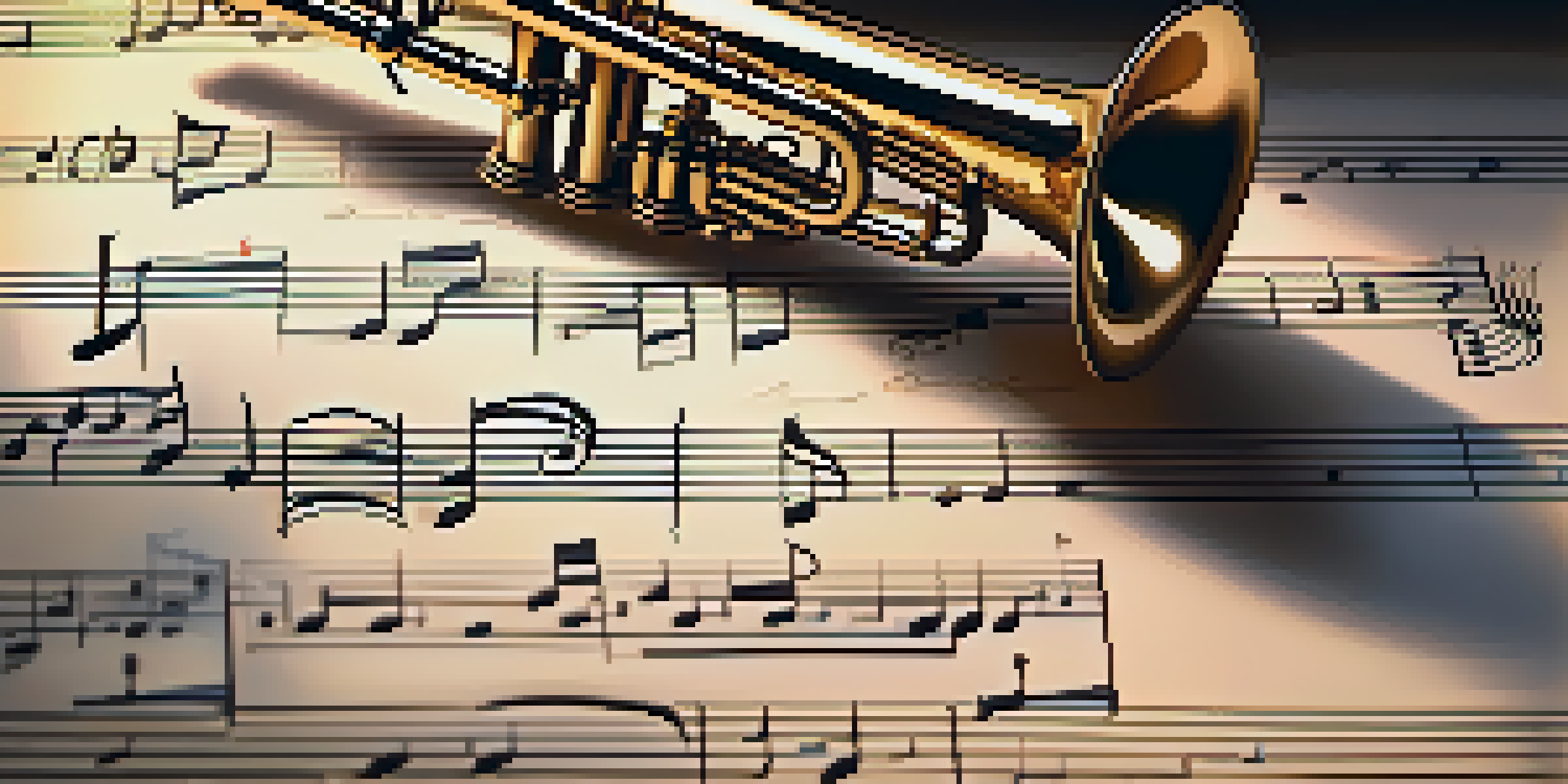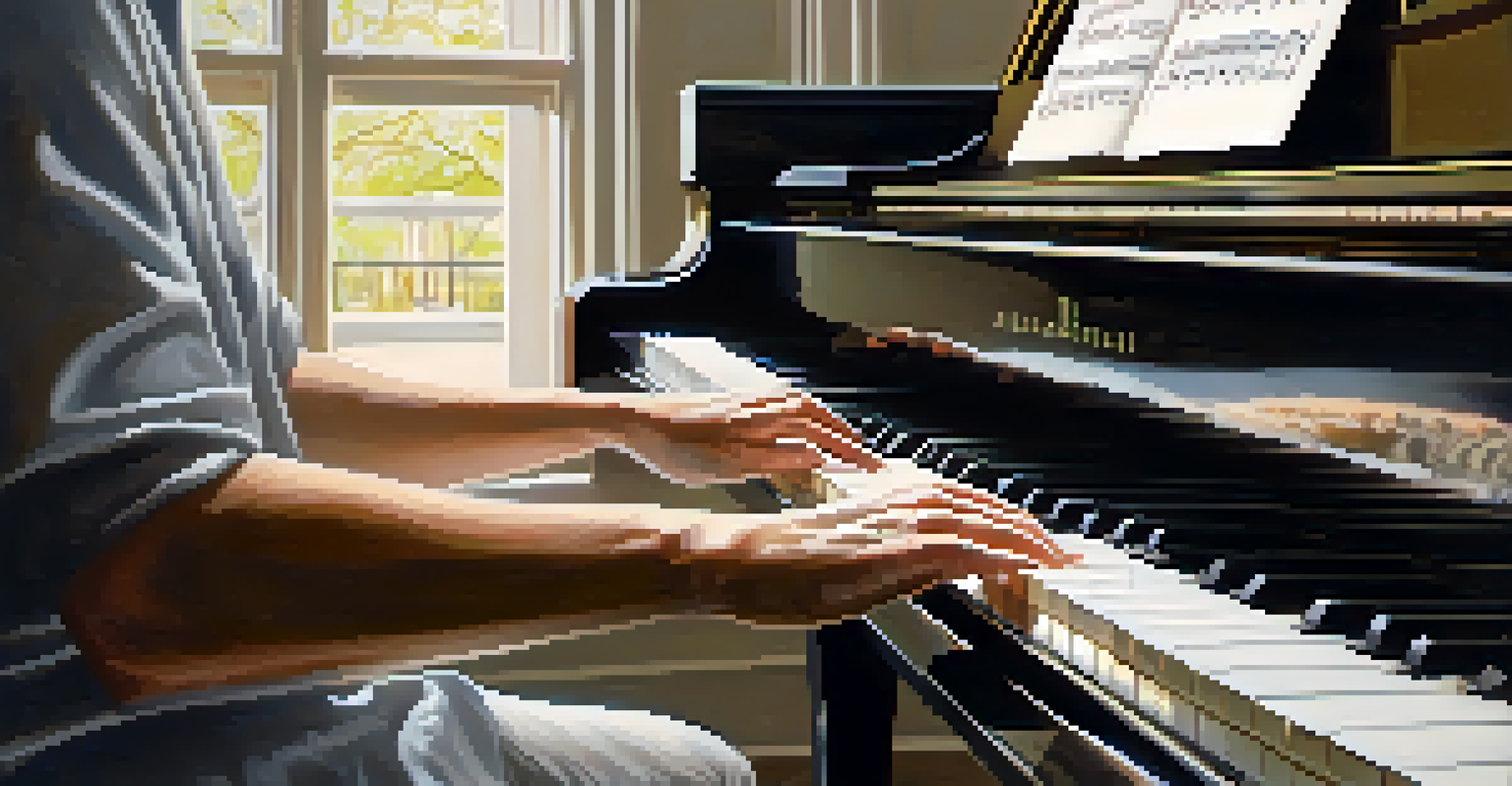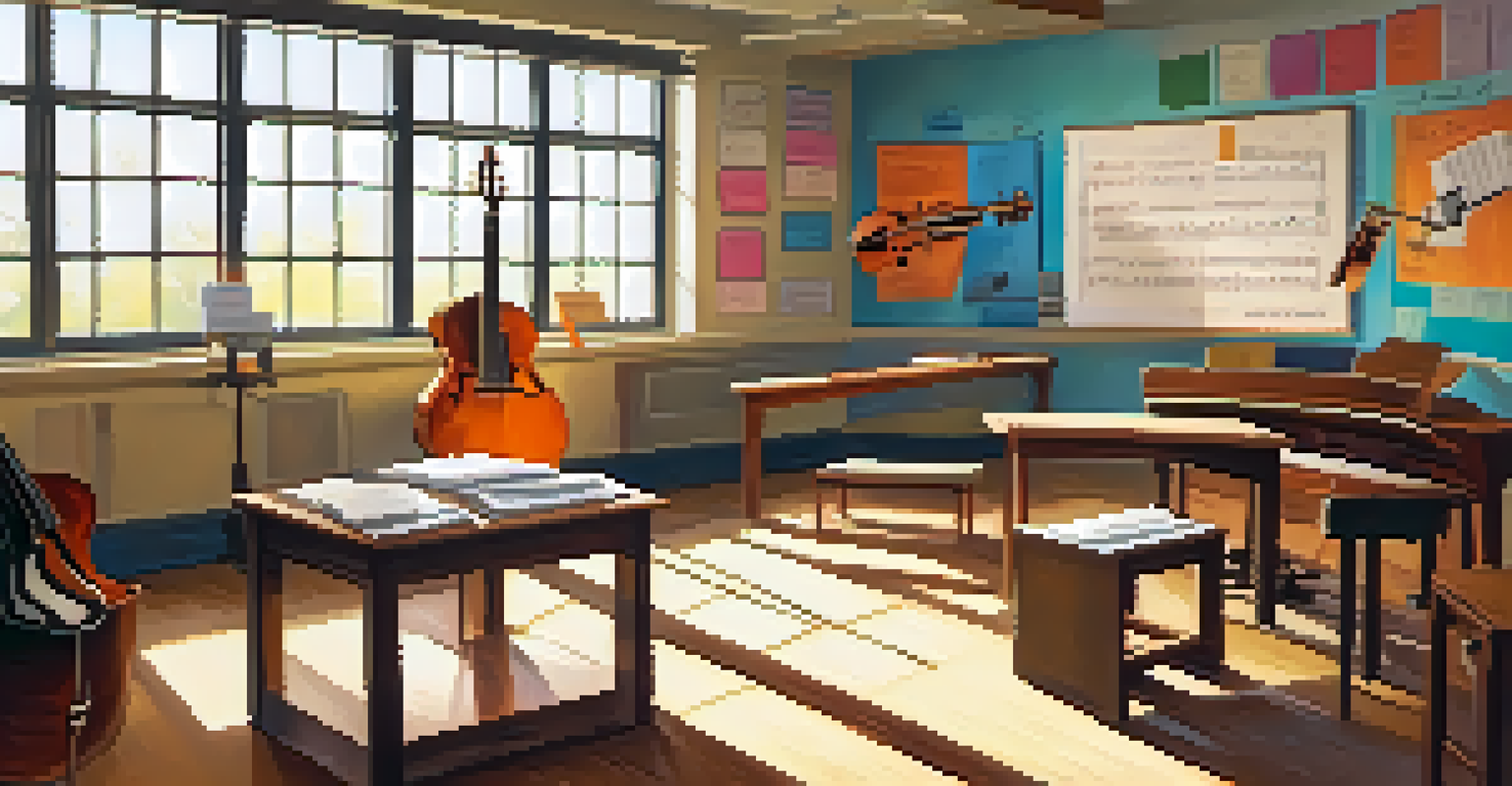The Basics of Notation: Writing Music for Performance

Understanding the Importance of Music Notation
Music notation serves as a universal language for musicians, allowing them to communicate ideas and emotions through written notes. Without it, performances would rely solely on memory, which can lead to inconsistencies. Notation ensures that each musician interprets a piece as intended by the composer, preserving the integrity of the music. This clarity is crucial for group performances, where timing and harmony are essential.
Music is the shorthand of emotion.
Think of music notation as a recipe for a dish; without it, you might end up with a completely different flavor! Just as chefs rely on precise measurements and instructions, musicians depend on notation to convey rhythm, pitch, and dynamics. By mastering the basics of notation, you not only enhance your own playing but also contribute to a more cohesive performance with others.
In essence, music notation is the foundation upon which musical expression is built. It bridges the gap between composers and performers, ensuring that the original intent of a piece is honored. Whether you're a budding musician or an experienced player, understanding notation is the first step toward unlocking the full potential of your musical journey.
The Elements of Music Notation Explained
At its core, music notation consists of several key elements: staff, notes, rests, and dynamics. The staff is the set of five horizontal lines that indicate pitch; notes are placed on these lines and spaces to signify different sounds. Rests, on the other hand, indicate moments of silence, allowing for pauses that are just as important as the notes themselves. Dynamics, which indicate volume, help to convey the emotion behind the music.

Imagine reading a book without punctuation; it would be quite confusing, right? Similarly, dynamics and rests add depth to music, guiding performers on how to interpret the piece. Each element works together to create a comprehensive guide for musicians, transforming abstract sounds into structured compositions that can be shared and enjoyed.
Music Notation as a Universal Language
Music notation allows musicians to communicate effectively, ensuring consistent interpretation and performance of compositions.
Understanding these elements is crucial for anyone looking to write or perform music. As you delve deeper into the intricacies of notation, you'll find that each symbol holds meaning and contributes to the overall feel of a piece. This knowledge not only enhances your performance skills but also enriches your appreciation of music as a whole.
How to Read and Interpret Music Notation
Reading music notation can initially seem daunting, but with practice, it becomes much more manageable. Start by familiarizing yourself with the staff, clefs, and note values. The treble and bass clefs are the most common, and each indicates a different range of pitches. By understanding what each symbol represents, you'll be able to decode the music on the page.
Without music, life would be a mistake.
Consider learning to read music like learning a new language; it takes time and patience. As you practice, you’ll find that your skills improve, allowing you to interpret pieces more fluidly. Use simple exercises to reinforce your understanding, such as identifying notes and their corresponding finger positions on your instrument.
Ultimately, the ability to read music notation opens up a world of possibilities. It allows you to explore a vast repertoire of compositions and collaborate with other musicians. With each piece you tackle, your confidence and proficiency will grow, making music performance even more enjoyable.
The Role of Rhythm in Music Notation
Rhythm is a fundamental aspect of music, and it plays a vital role in notation. It dictates the timing and flow of a piece, ensuring that musicians play in sync. In music notation, different note shapes and lengths indicate various rhythmic values, from whole notes to sixteenth notes. Understanding these values is essential for keeping the beat and creating a cohesive performance.
Think of rhythm as the heartbeat of a song; it gives life to the music and drives its energy. When musicians master rhythm, they can convey the intended mood and excitement of a piece. This is why practicing rhythmic exercises is just as important as working on melodies and harmonies.
Understanding Key Notation Elements
Familiarity with the staff, notes, rests, and dynamics is essential for musicians to read and create music effectively.
Incorporating rhythm into your practice routine will enhance not only your technical skills but also your overall musicality. By paying attention to the rhythmic notation, you'll be better equipped to interpret and perform pieces accurately, making your music more engaging for both you and your audience.
Dynamics: Adding Emotion to Your Performance
Dynamics in music notation indicate how loudly or softly a piece should be played, significantly affecting its emotional impact. Terms like 'piano' (soft) and 'forte' (loud) guide musicians on how to express themselves within a composition. By varying dynamics, performers can evoke different feelings and enhance the storytelling aspect of the music.
Imagine listening to a piece that stays at the same volume throughout; it would likely become monotonous. By incorporating dynamic changes, you can create a more dynamic and engaging performance. This not only captivates your audience but also allows you to explore the full emotional range of the music.
As you practice, pay attention to the dynamic markings in your sheet music. Experiment with different levels of volume to see how it changes the overall feel of the piece. By mastering dynamics, you will elevate your performance and connect with your audience on a deeper level.
Articulation: Defining Note Expression
Articulation in music notation refers to how notes are played or sung, highlighting the nuances of expression. Symbols like staccato (short and detached) and legato (smooth and connected) inform musicians on how to approach each note. Understanding these articulations is key to delivering a polished performance that captures the composer’s intent.
Think of articulation as the difference between a casual conversation and a dramatic monologue; the way you express your words can change the entire message. In music, articulations add texture and character, allowing you to shape the sound and convey emotion effectively.
Dynamics and Articulation Enhance Music
Incorporating dynamics and articulation into performances adds emotional depth and expression, making music more engaging for audiences.
By incorporating various articulations into your practice, you will develop a more nuanced playing style. Experiment with different techniques to see how they affect your interpretation of a piece. This attention to detail will set your performance apart and make it more memorable for your audience.
Tips for Writing Your Own Music Notation
If you're interested in writing your own music, understanding notation is essential. Start by outlining your ideas: what emotions do you want to convey, and what instruments will you use? Once you have a concept, begin notating your melody and harmonies using the elements you've learned. Remember, simplicity is key; especially when you're starting out.
Consider your audience and the performers who will be playing your piece. Clearly notated music will make it easier for them to interpret your intentions. Use appropriate dynamics, articulations, and rhythms to guide them, and don't hesitate to seek feedback from fellow musicians as you refine your work.

Finally, embrace the creative process. Writing music can be incredibly rewarding, allowing you to express yourself and share your vision with others. Keep practicing, experimenting with different styles, and most importantly, have fun with your musical journey!